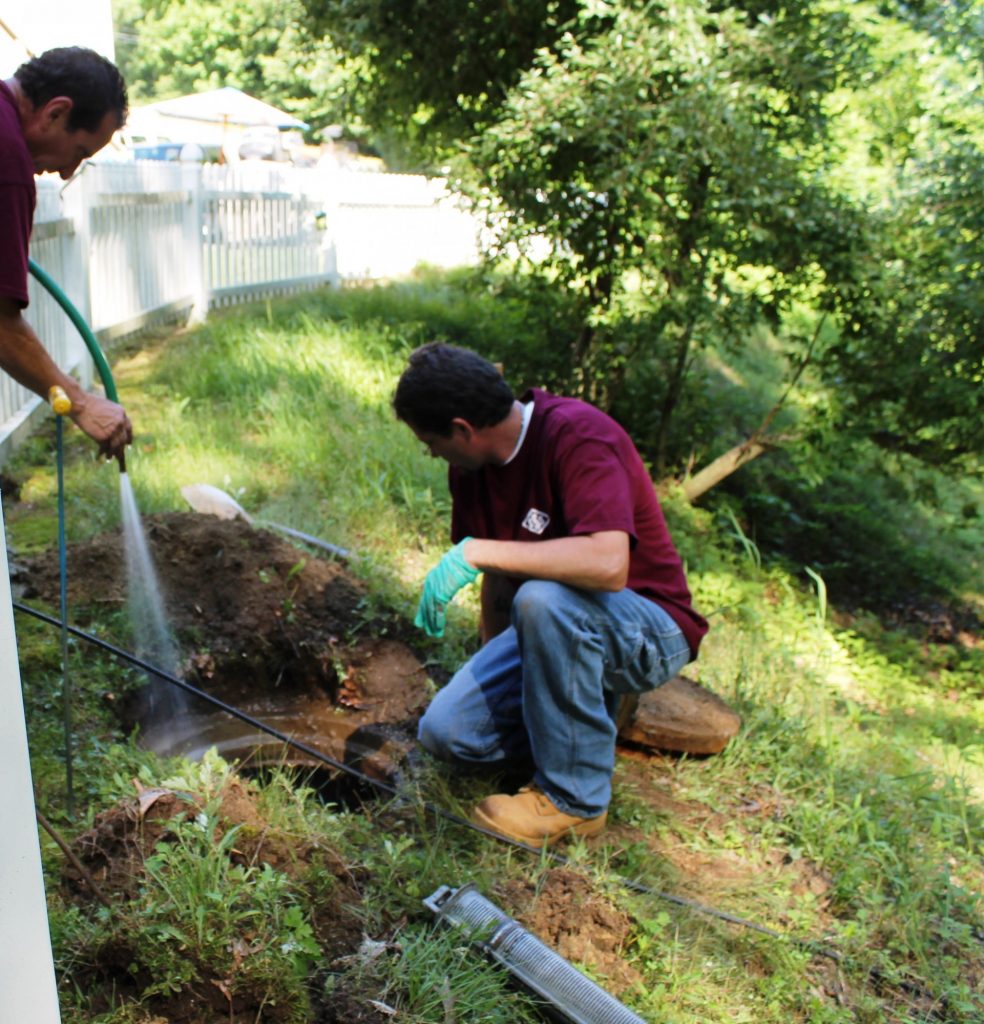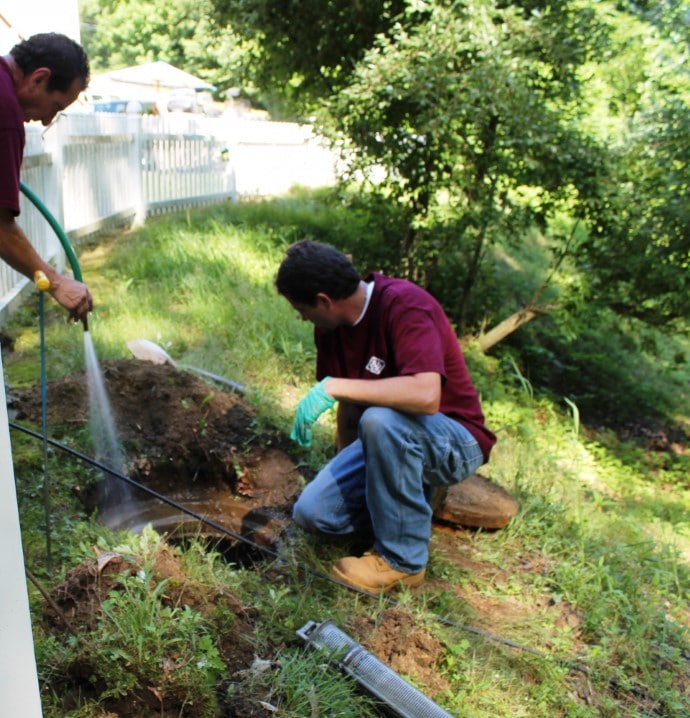
Septic tanks have been around as early as the mid 1800s with the first inception believed to be in France. Septic tanks were once made from Iron, steel, rock, open pits and even wood. These primitive septic tanks can pose a serious threat to unsuspecting neighbors and children running through your yard. These systems become unstable and dangerous with age. Systems can pose a serious threats and even lead to death is servicer cases. New up to date tanks are constructed of high density concrete, fiberglass and plastics that are typically located below grade (below ground level).
Septic tank drain fields are usually constructed of perforated pipe buried in a crushed gravel stone bed below the frost line to prevent the system from freezing in extreme weather conditions. When a septic tank and drain field starts to clog, septic tank odors will sometimes begin to appear, it is usually due to a buildup of bio mat in the drain field. Anti bacterial hand soaps, phosphorus and heavy water usage can all contribute to the dilution of the natural bacteria found in a septic system causing undigested solids to drain into the drain field creating a bio-mat. This bio mat appears as a black tar like substance that over time will become hard clogging your drain field causing system failure.
Onsite septic waste water treatment septic systems are common in rural areas of the U.S. where location and proximity are not feasible to connect to local waste water treatment plants. With increased use of onsite waste water treatment systems topping more than 20 million homes, regulation governing the integrity of septic systems will only expand. Homeowners and their septic system will increasingly become under the watchful eye of sewer enforcement officers. Regular pump outs and inspection of septic system are becoming mandatory for all home owners ensuring that systems are functioning correctly, ensuring the integrity of septic systems and protecting the environment from drinking water contamination.
We have created a basic check list for reader review. Inspection of your septic system and drain field only takes a few minutes a month ensuring that the system is functioning properly.
1) Inspect the general area around the septic tank for wet spots.
2) Inspect septic tank lid and riser for cracks. Inspect the overall condition of the area. Inspect the overall area for wet spots.
3) Inspect the effluent level in the septic tank. Septic tank effluent or water levels should stabilize at the bottom of the out flow pipe leading to the drain field.
4) When the septic tank is pumped out, listen for water back flowing into the septic tank from the drain field. If you hear water trickling back into the septic tank, you may have a buildup of bio-mat clogging the drain field preventing the system from leaching.
5) Be on the lookout for septic odors and sewer smells. Strong septic odors and smells are indicative of a failing system or clogged pipes.
6) Inspect toilets on a regular basis. Leaking toilets can fill a septic tank and drain field causing premature wet spots to form in the yard.
7) Inspect any pumps, drains and sump pumps that may be connected to the system. Diverting these types of systems to a grey water area will reduce access water load on the septic system and drain field.
8 ) Water softeners that utilize salt as the medium should be rerouted if possible into a grey water area. When water softeners renew, the salt water brine that is back flushed from the system kills off beneficial bacteria increasing the amount of undigested solid waste forced out into the drain field creating bio-mat build up.
9) Never dump chemicals down the drain. Harsh chemicals will kill off beneficial bacteria reducing the system’s ability to digest solid waste.
10) Anti bacterial hand soaps and hand cleaners kill off bacteria reducing the ability of the system to digest solid waste buildup. Solids will eventually flow out into the drain field causing a bio-mat build up.
11) Fats, oils and grease products should all be disposed of in the trash can. Never dump fats, oils or greases in the toilet.
12) Bath oils and moisturizers should be limited.
13) Overuse of toilet paper can clog up a system. Be sure to use a paper that is septic safe.
14) Inspect the baffle of the septic tank. The baffle helps to prevents solid waste from escaping out into the drain field.
15) Some septic systems are equipped with a septic system effluent filter. The purpose of the effluent filter is to filter out and trap any solid waste that may slip past the baffle area of the system. Effluent filters should be inspected every two weeks until you are able to determine when the filter should be cleaned.
Septic systems require regular monthly inspection. Treat your septic system with a natural bacterial septic tank treatment supplement ensuring the digestion process and breaking down of solid waste in the system. When referring to the check list above, it is advised that you contact your local municipality to ensure full compliance with all local sewer enforcement codes.
